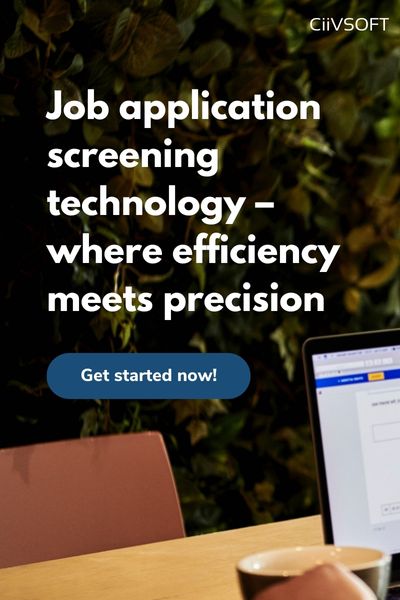Artificial Intelligence (AI) has been with us for a long time now and it has become a common component in many systems and technologies adopted and used by businesses. It has proven to be highly effective across a wide range of applications. In the talent and recruitment tech market, AI is being increasingly promoted but it tends to be viewed with mixed emotions and certain degree of resistance.
Artificial Intelligence suggests replacement
The problem is the perception of Artificial Intelligence and, in part, how it is presented or sold by organisations to prospective customers in the talent and recruitment space. One dictionary definition for Artificial Intelligence is;
“the theory and development of computer systems able to perform tasks normally requiring human intelligence.”
This definition suggests that a machine can replace the human when it comes to making decisions, which, in a highly people-centric area like recruiting does not make for a great sales pitch. AI-related terminology has been too broadly and, in a large number of cases, wrongly used in the technology sales process. This has had the effect of creating a level of fear and wariness of new technology when it should be something organisations get excited about. It may not be the case in all sectors but my experience shows this to be true when we look at the talent and recruiting space. Many recruitment and talent practitioners I’ve spoken with immediately think in the negative when they hear AI or automation-related buzzwords. This preconceived notion of cynicism is odd when compared to other facets of life where we are happy to invest money in tools and technology to make our lives easier, however it is completely understandable.
If you’re being pitched a piece of technology which claims to be able to do your job better, faster, more consistently and for less cost then you’re unlikely to suddenly welcome it with open arms or tell your boss that it’s something your business must immediately invest in. The idea of adopting technology which seeks to replace the human in a very human-centric area such as recruitment or talent doesn’t stack up for most people. And they are right to think that way.
Recruitment and technology partnership
The fact is there are huge benefits to be gained from automation tools, machine learning, AI and natural language processing which can help alleviate and streamline cumbersome and time-consuming manual processes like those found in recruiting. The key is to create a partnership between the human and the technology which brings the best of both worlds into one effective solution.
This is the principle of an Augmented Intelligence approach and the path which recruitment technology development companies like CiiVSOFT follow. A dictionary definition for Augmented Intelligence is;
“the study of how machines that have some of the qualities of the human mind, such as the ability to understand language and recognize pictures, can help humans to solve problems or deal with information. In Augmented Intelligence, humans and machines are intertwined in a continuous learning and improvement loop.”
This sounds a more palatable right? Gaining the efficiency, speed, cost and improvement benefits that comes with technology whilst keeping the human firmly involved in the process.
Let me give you a real-world example of how this can work in a recruiting context.
Augmented Intelligence example
Let’s look at the process of reviewing job applications and resumes which is a key task at the very front end of any recruitment process. As a manual task it is time-consuming, repetitive and arduous especially if you’re managing large volumes of applications and multiple vacancies. Nevertheless, it’s a key process component and one which often suffers from bottlenecks, inconsistency, bias risks and general inefficiency due to the relatively large amount of data involved.
Even if organisations have invested in technology such as an Applicant Tracking or CRM system, the process of manually reviewing job applications is very often the same. Login to your system, navigate to your vacancy, open up each new applicant record, download their resume, review their details and decide whether you want to advance the applicant further down the pipeline. Then repeat this process a few hundred times across a number of vacancies.
With the time-consuming and repetitive nature of this kind of task it’s no wonder that bottlenecks and inconsistencies can creep in and this can negatively affect the rest of the vacancy pipeline and can also have a damaging effect on the candidate experience.
Technology can play a valuable part in making this part of the recruiting process more efficient and less arduous for the recruiter, but crucially, we need the recruiter to remain a key component of the process. After all, the recruiter is the subject matter expert in this scenario, and we are dealing with real human beings in this process.
Augmented approach to recruiting
If we take an Augmented Intelligence based approach to solving the problem then we can use technology to do the heavy lifting in terms of screening and matching every application against the vacancy quickly, consistently, in near-zero time and without bias. With Natural Language Processing we can harness the power of neural translation to enable us to screen applications in multiple languages around the clock, day in, day out. The output of can be a recommendation or ‘long-list’ of the best matching applications which is then passed to the recruiter to pick up the reigns, review and make the decisions regarding who to take forward. To complete the circuit we can introduce a feedback loop to power machine learning based on outcomes achieved in the process.
Rather than seeking to remove human decision making, in an Augmented Intelligence based scenario, we are aiming to enable the human to make better decisions. In the example, the recruiter is served with a much smaller number of applications to review, enabling them to better focus their time and expertise resulting in a swifter, more efficient and higher quality process. By adopting this approach, the recruiter remains in control and retains the decision-making responsibility.
This is not a new concept of course. If a recruiter is working with a preferred list of outsourced or 3rd party recruitment agencies, then they will typically ask an agency to submit their ‘best 2 or 3 candidates’ against a vacancy rather than every candidate they have who may be a fit. The Augmented Intelligence approach works in much the same way.
Make something greater by adding to it
I guess what I’m suggesting, is that in many cases the fear and wariness of new technologies is not driven by the technology itself but the way it is presented and interpreted. If someone is simply telling you that the technology they are offering you is “AI powered and it will automate everything” then they shouldn’t be surprised when the barriers go up. By enabling a deeper understanding of the technology in question, the use cases for it and how it can fit within the existing infrastructure of a business, it will help to focus attention on the significant benefits rather than adopting a position of negativity due to a mistaken perceived threat.
If we take one last look at the dictionary, we can see that one definition of the verb to Augment is as follows:
Augment - ”to make something greater by adding to it.”
I think this is the best way to summarise the Augmented Intelligence approach. Take an established, solution and add to it, (with technology), ensure critical components remain, (human expertise), and create something greater than the sum of its parts. In a recruitment context this outcome should represent a ‘best of both worlds’ scenario and a solution which delivers for business, its users and candidates alike.
Thanks for reading and feel free to share a comment or opinion.








